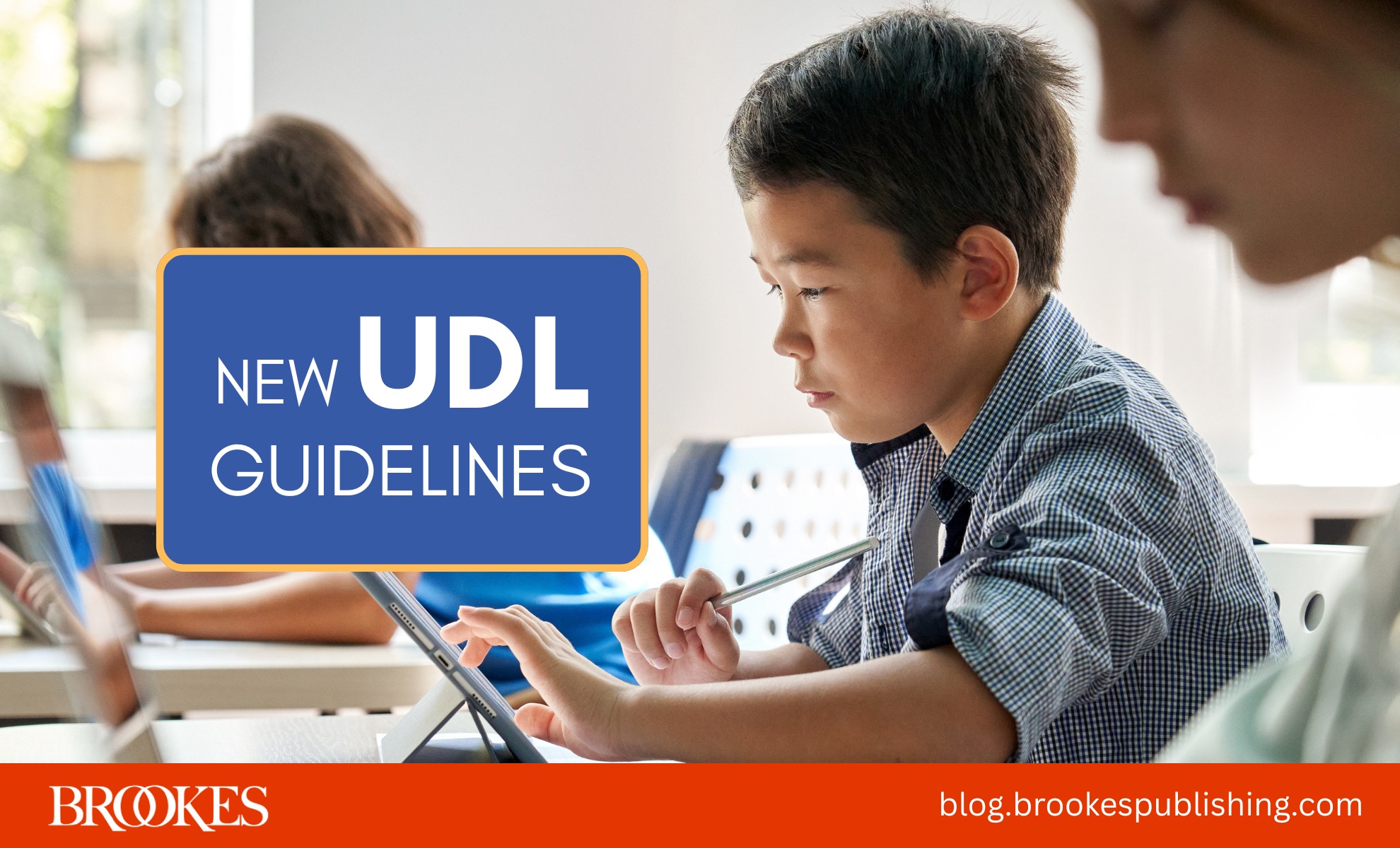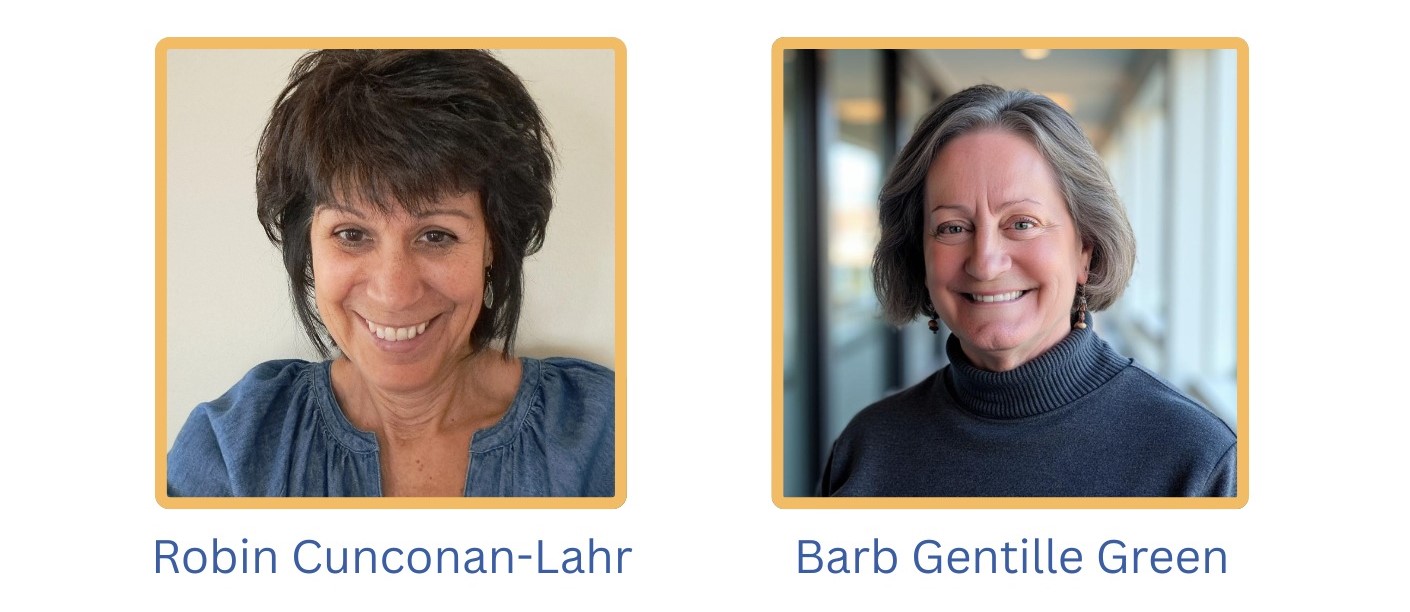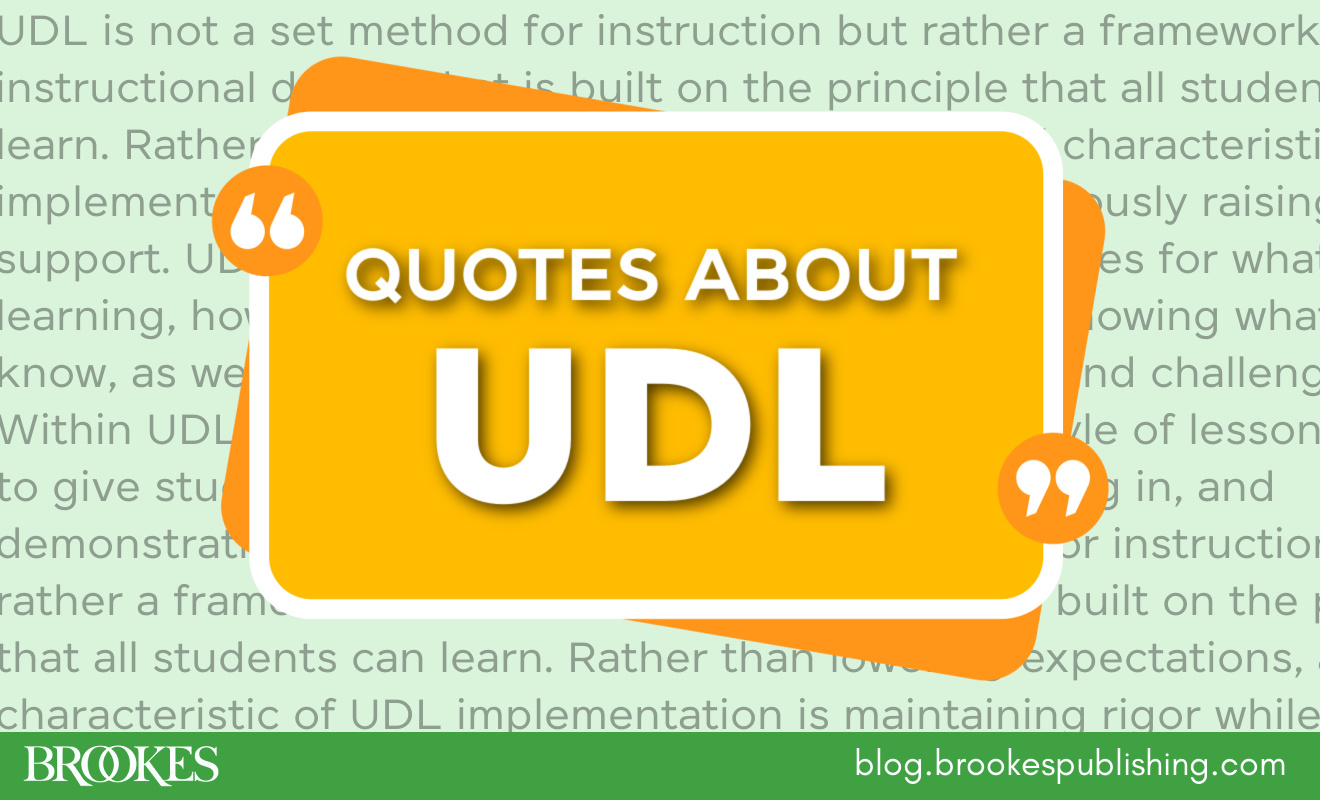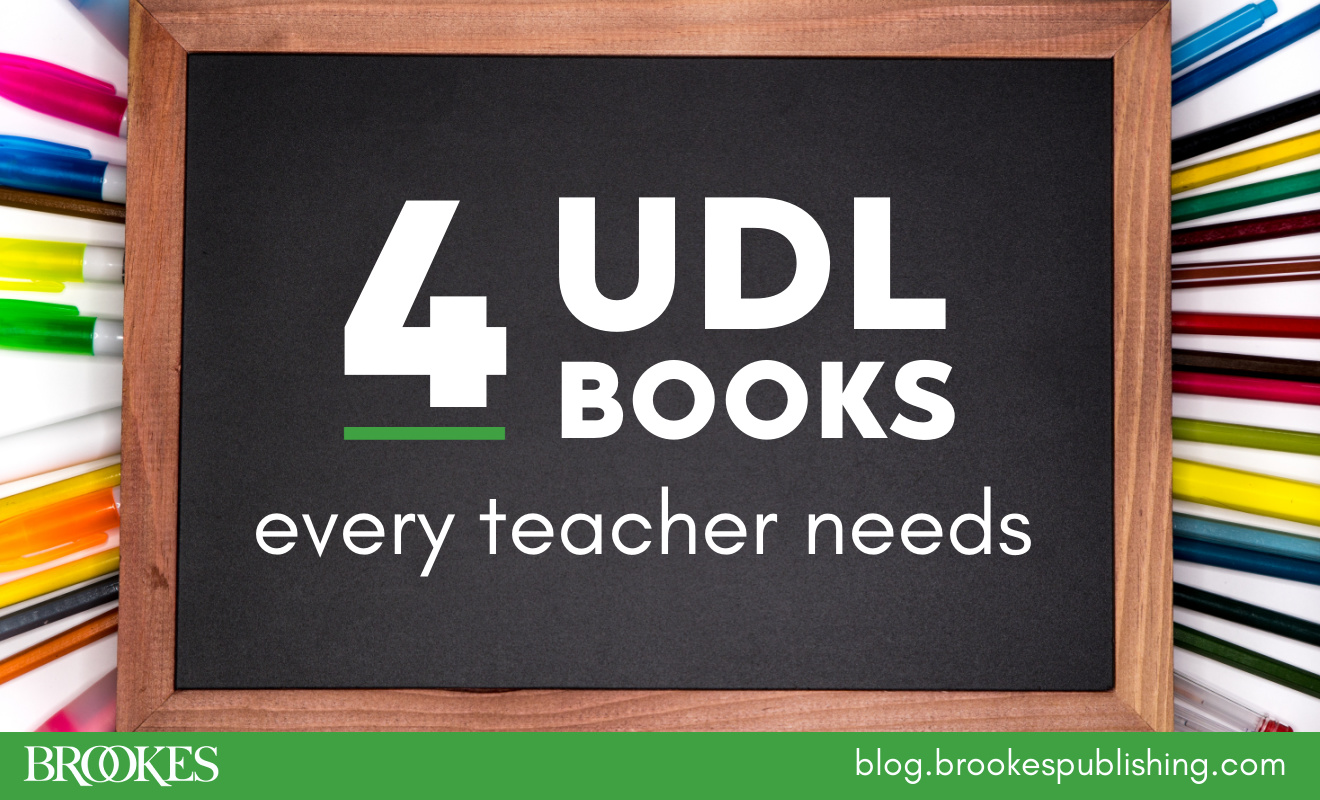The “New” UDL Guidelines: Insights & Strategies for IEP Teams
October 7, 2025
Today we’re excited to welcome two special guests to the Brookes blog: Robin Cunconan-Lahr, an attorney and founder of Innovating for Justice LLC, and Barb Gentille Green, owner of Inclusivity by Design, LLC. Robin and Barb are here today to talk about an important topic: the newest UDL guidelines and how they offer IEP teams an intentional path to support inclusive practices.
***
A new school year provides exciting opportunities for IEP teams to reset and reimagine! One opportunity that can benefit educators, students, and families in the IEP process is to consider the latest version of the Universal Design for Learning (UDL) Guidelines 3.0.
In this blog post (the first of a two-part series), we begin by offering insights and strategies for how IEP teams can utilize the UDL guidelines intentionally as part of the IEP process to support inclusive practices.
What Are the UDL Guidelines?
The UDL Guidelines are a tool that can be applied in educational settings to ensure all students have equitable supports and access to meaningful and challenging learning. The guidelines provide considerations for the design of educational environments, for how instruction is provided, and for how students can demonstrate their learning.
Based on the principles of Universal Design for Learning, an educational framework developed by CAST, the guidelines are organized under the umbrella of three principles: designing multiple means for engagement, representation, and action & expression.
The guidelines offer a variety of ways to empower educators to be more intentional and inclusive when designing learning options for all students.
Since their inception in 2008 and through multiple iterations, the UDL Guidelines have consistently been designed to be inclusive of all learners. Learning is not a “one size fits all” approach. Designing proactively and with flexibility from the onset—while being mindful of the variability of learners in our classrooms—is a key practice of UDL.
Themes in the Newest Guidelines: Insights for IEP Teams
The newest set of guidelines, referred to as UDL version 3.0, were released in July 2024. This latest version highlights several themes, offering insightful guidance to IEP teams.
- Identity is a part of learner variability. This theme emphasizes the “who” of learning. IEP teams should ask: Who are our learners, and how can we consider their learning identity in designing Individualized Education Programs (IEPs)?The Individuals with Disabilities Education Act (IDEA) guides IEP teams to develop education programs individually designed to meet the unique needs of each learner. Underscoring their uniqueness as learners is essential in developing “appropriately ambitious annual goals,” as articulated in the U.S. Supreme Court case Endrew F. All students can benefit from an awareness of who they are as learners to better understand their unique learning processes.
- Promote an asset-based approach to instructional design. IEP teams must be guided by strengths-based approaches rather than a deficit mindset so that specially designed instruction is developed through a lens of Presumed Competence. This fosters high learner expectations to support greater access to the general education curriculum and inclusive general education environments.
- Shift from educator-centered language to learner-centered language. The student is front and center to the IEP process! Too often, the process is driven by the voice of educators at the expense of student participation and input. Centering language toward the learner elevates the valuable role students have under IDEA to be included meaningfully throughout the IEP process.
- Address barriers rooted in biases and systems of exclusion. This theme acknowledges the roots of ableism as a barrier to equitable access and authentic inclusion for students with disabilities. When IEP teams center disability representation across learning environments, they elevate learner voice, ensure physical and programmatic access, and can act to counter the status quo and systems rooted in historically exclusive practices.
Three UDL Strategies for the IEP Process
1. Use the UDL Graphic Organizer
The UDL Guidelines 3.0, in its UDL Graphic Organizer format, is a useful visual representation and tool for educators, students, and families to support the intentional practice of UDL.Making the UDL Graphic Organizer visible and available as a natural part of the IEP process serves to build knowledge of the UDL framework, which can help create inclusive learning environments. The guidelines focus conversations around the UDL principles, leading teams to inclusive IEP design and implementation.
2. Design UDL-Centered IEP Questions
UDL-centered questions direct IEP teams away from deficit-focused or compliance-based questions. Instead, they steer teams to think about multiple means of engagement, representation, and action/expression: the three UDL principles that support inclusive education! Consider these examples of UDL-centered questions:
Engagement (the “why” of learning)
- What motivates the student, and how can connections be made to their interests and strengths?
- How can choice and options be provided for the student’s participation and inclusion in general education?
- What strategies can support the student to persist when tasks are challenging?
Representation (the “what” of learning)
- What barriers in the curriculum or environment might limit access to general education content?
- How can we design multiple modes (visual, auditory, tactile, symbolic) for the student to understand new information?
- How is information currently being presented to the student and does it consider their strengths?
Action & Expression (the “how” of learning)
- How can flexibility be built into assessments so the student can show progress in multiple ways?
- In what ways can the student demonstrate learning (writing, drawing, speaking, creating, use of technology, role play)?
- How can we scaffold executive function skills like planning, organizing, and self-monitoring for the student?
3. Center the Student
The explicit goal of UDL is learner agency. All learners need to be engaged in learning and in the process of learning. Centering the student throughout the IEP process guides IEP teams to empower students. Engaging students early, often, and in meaningful ways is essential.
The new UDL guidelines, framed with an even greater focus to break inclusion barriers, offer IEP teams an intentional pathway to support inclusive practices! Stay tuned for the next post from Robin and Barb—they’ll be exploring the UDL principle of engagement and offering guiding questions for IEP teams to consider as they leverage the newest version of the guidelines.
About the Guest Posters
 Robin Cunconan-Lahr is an attorney and founder of Innovating for Justice LLC, and Barb Gentille Green is owner of Inclusivity by Design, LLC. If you have questions for them, you can reach out to Robin at this email and Barb at this email.
Robin Cunconan-Lahr is an attorney and founder of Innovating for Justice LLC, and Barb Gentille Green is owner of Inclusivity by Design, LLC. If you have questions for them, you can reach out to Robin at this email and Barb at this email.




Write a Comment
Your email address will not be published. Required fields are marked *
Post a Comment